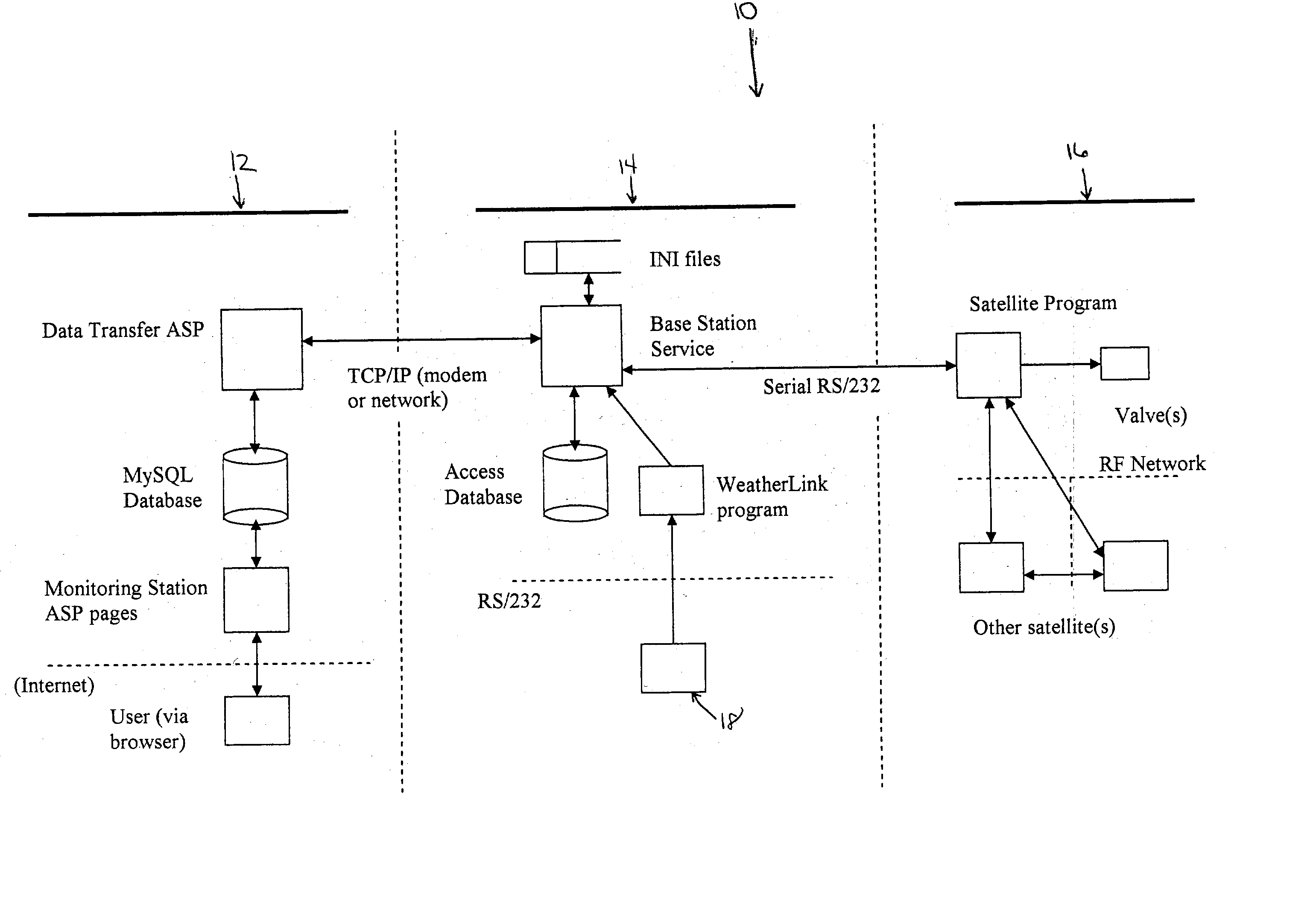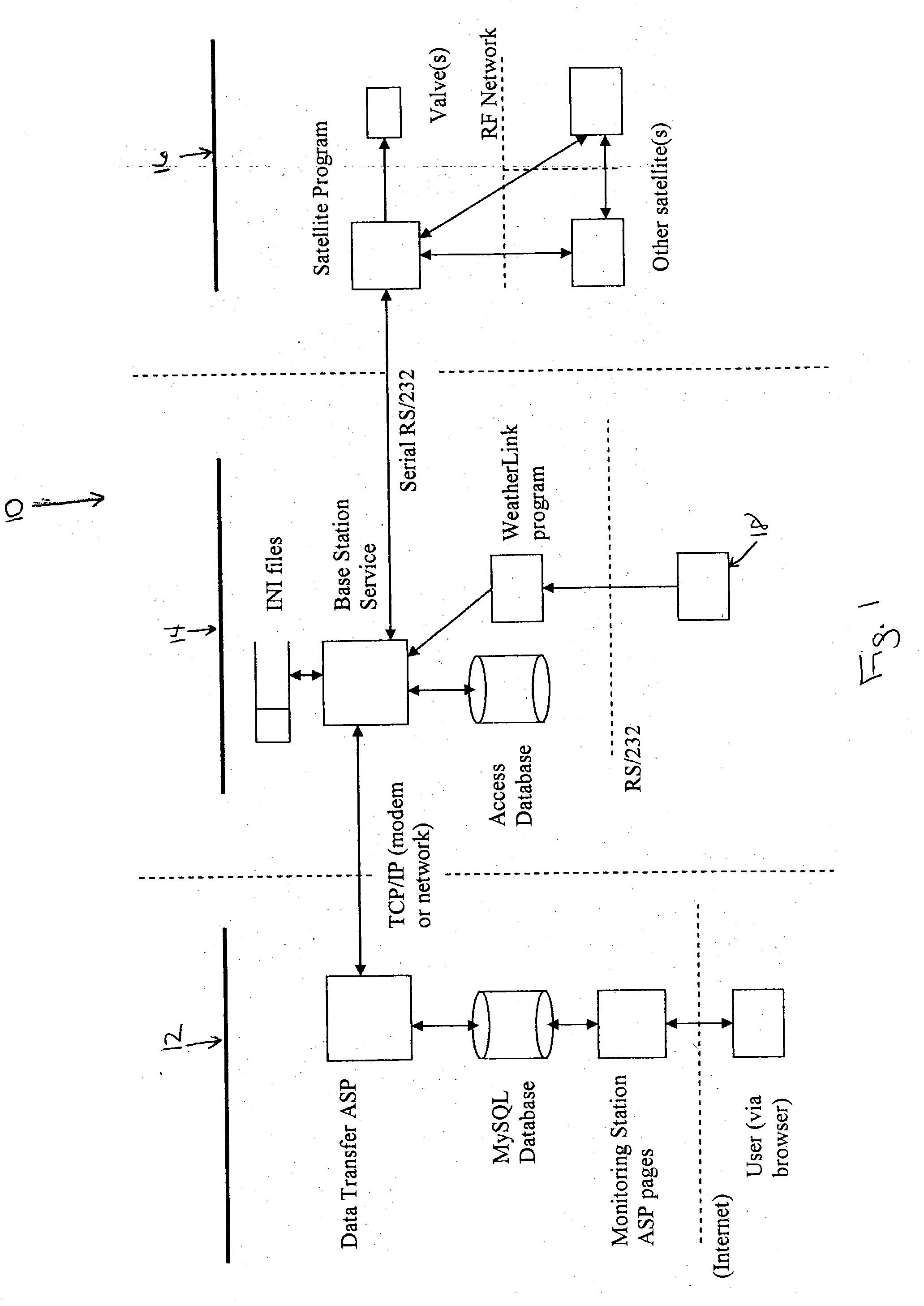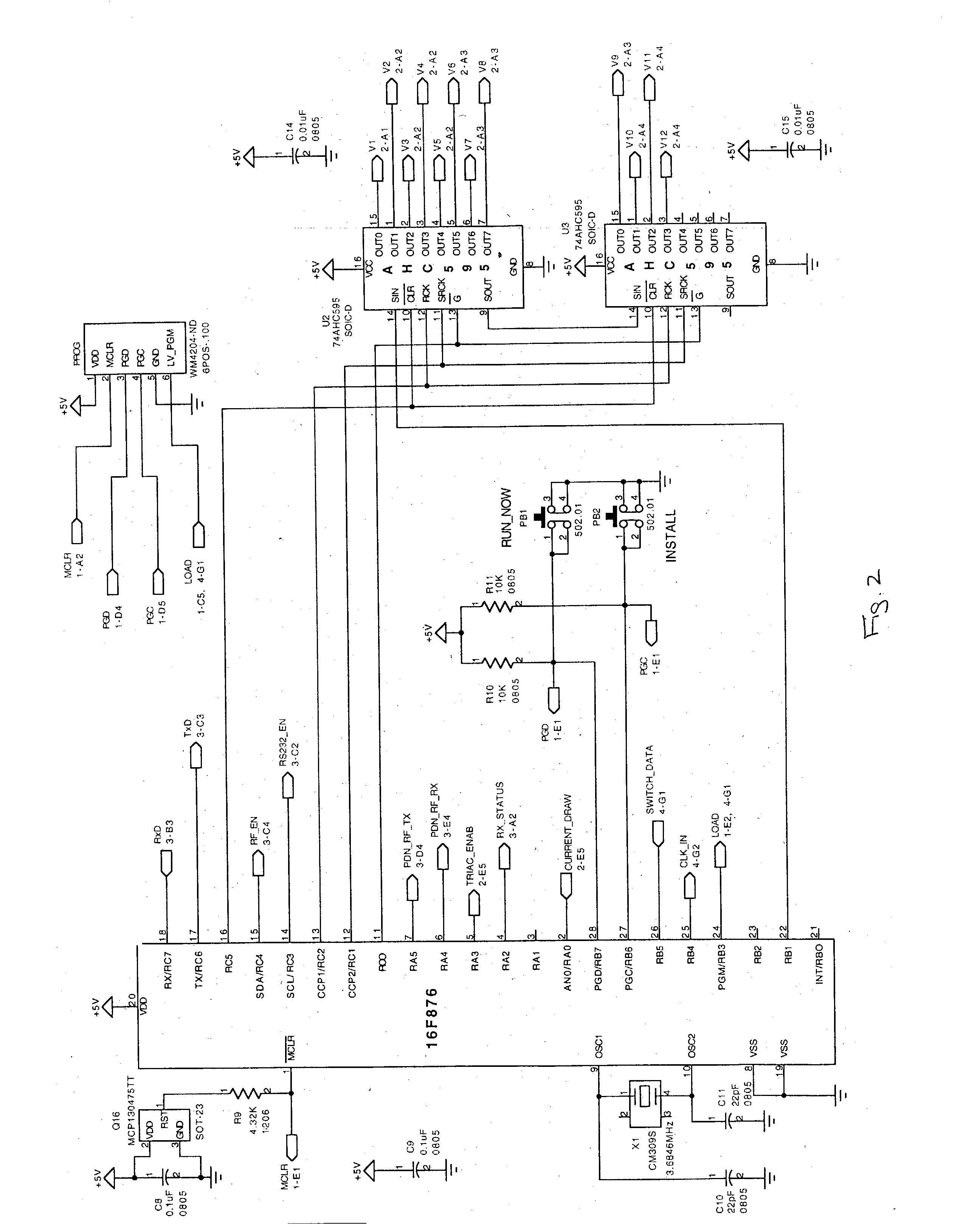System for controlling irrigation applications
a technology of irrigation system and irrigation system, applied in process and machine control, process control, process control, etc., can solve the problems of water percolation beyond the root zone and waste, and sandy soils do not retain water well
- Summary
- Abstract
- Description
- Claims
- Application Information
AI Technical Summary
Problems solved by technology
Method used
Image
Examples
examples 1
[0065] The monitoring station is installed on a single host server with an "always-on" connection to the Internet. The software runs as a standard web site, under a single base URL and IP address as shown in FIG. 3. It has two primary interfaces (i.e., top-level pages),one for automatic communications (used by the Base Stations) and one for manual use (accessed as a standard web page via a browser).
[0066] Data Transfer Asp
[0067] This set of ASP pages handles communication between the Monitoring Station and the Base Station(s). When a Base Station initiates contact with the Monitoring Station, it requests the appropriate ASP page, which handles the conversation on the Monitoring Station's side. These pages collect the information reported by the Base Station and send down instructions generated by the user (if any exist).
[0068] MySQL Database
[0069] This is the central data repository for the system 10. It includes information about all Base Stations in its network, including informat...
example 2
[0102] Installation Process
[0103] Install the Monitoring Station. The Monitoring Station should be running and connected to the Internet before proceeding to the following steps. Install a proper version of Crystal Reports. Version 8.5 Professional was used in the testing and development of the site.
[0104] Run the MySQL.sql script to setup the MySQL database.
[0105] Create an ODBC DSN to the database.
[0106] Create a virtual directory or web site for the web site files. The files in the "Virtual Directory" folder of the Liquid Assets source code should be put at the root of the web site or virtual directory. Be sure to allow parent paths since the pages use server side includes to the files in the "Include" and "CustomInclude" source code folders as well.
[0107] Modify the "DatabaseConstants.asp" file in the "Custominclude" folder. Specifically, change the "database_connection_string" constant to use the right DSN, MySQL user name, and MySQL password.
[0108] Modify the "Security.asp" fi...
example 3
[0229]
4 INSTALLATIONMODE.C(ABRIDGED) . . . . . void PollForInstallationMode( ) { int1 in_installation_mode; in_installation_mode = PollForInstallationButtonPush( ); if(!in_installation_mode) { return; } TurnOffDebugLED( ); ResetSchedule( ); . . . . . while (in_installation_mode) { / / Send a ping SendSmallMessage(SMALL_MESSAGE_TYPE_PING, MESSAGE_DIRECTION_TOWARDS_CHILD_SATELLITES); ResetSerialReceiver( ); / / Wait for a response. while (in_installation_mode) { if(PollForRFPingReply( )) { / / Got Reply. FlipDebugLED( ); . . . . . break; } in_installation_mode = in_installation_mode && !PollForInstallationButtonPush( ); } in_installation_mode = in_installation_mode && !PollForInstallationButtonPush( ); } ResetSchedule( ); . . . . . }
[0230]
5 SCHEDULEBUILDER.CPP(ABRIDGED) . . . . . void ScheduleBuilder::PollForNewSchedule( ) { . . . . . if(!IsReadyForNewSchedule( )) { return; } . . . . . / / - Build the schedule data. ScheduleData schedule_data; BuildCurrentSchedule(schedule_data); / / -Crea...
PUM
 Login to View More
Login to View More Abstract
Description
Claims
Application Information
 Login to View More
Login to View More - R&D
- Intellectual Property
- Life Sciences
- Materials
- Tech Scout
- Unparalleled Data Quality
- Higher Quality Content
- 60% Fewer Hallucinations
Browse by: Latest US Patents, China's latest patents, Technical Efficacy Thesaurus, Application Domain, Technology Topic, Popular Technical Reports.
© 2025 PatSnap. All rights reserved.Legal|Privacy policy|Modern Slavery Act Transparency Statement|Sitemap|About US| Contact US: help@patsnap.com



